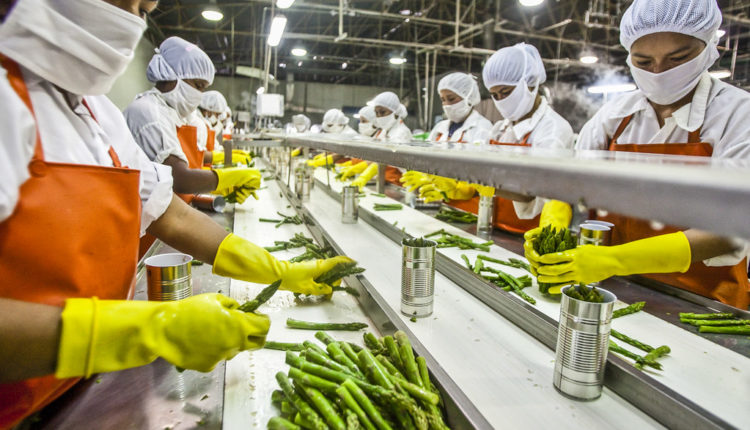Post-Independence, in India if we look at the evolution of food processing industry, until 1960’s it was mainly limited to primary processing of commodities like milling of cereals like rice and wheat, oil expulsion, jaggery and sugar production etc. in small scale, semi-mechanized way. Tea and Coffee processing were formally industrialized during this time, due to the colonial trade and interventions. In the period between 60’s and 80’s, the number of industries in the primary processing increased, as also the level of mechanization in the units. The typical shift can be witnessed in rice mills growing in size and getting mechanized, oil mills shifting from using cattle (Ghani) to mechanical oil expellers. Dairy processing furthered ahead than other sectors during this time to be the pioneering sector in Indian Food Processing, thanks to the fruits of “White-Revolution” spearheaded by Dr. Varghese Kurian before 1970’s. Processing of fruits and vegetables was negligent during this time. The economic liberalization in 1991, which paved inroads for multi-national companies to establish units in India, created a manufacturing stir as new units were established to function as contract manufacturing units, raw material, packaging material and ancillary suppliers. Many domestic companies also expanded their scale during this time and went on to become large domestic and multi-national companies in the present day. The food processing sector grew considerably in the following two decades, with increased acceptance of processed foods by consumers. Categories like RTS fruit beverages, Biscuits, Confectionery, Processed dairy products and beverages, Frozen foods have recorded notable growth, while conventional processed categories like canned food, Ready-to-eat/ thermally processed food, Instant breakfast mixes have grown at a lower rate, in the last decade.
At large, the Indian food processing sector has been valued at USD 260 billion as per estimates of 2016 and was expected to reach USD 480 billion by 2020. As per the MoFPI report, the sector has recorded a growth of 8.4% during the five year period ended in 2017-181. It is the fifth-largest sector in terms of production, consumption and exports, and contributes to around 8 % of GDP2. The sector also contributes to about 12% and 14% of employment in registered (2016-17) and un-incorporated (2015-16) food industries respectively.
The growth of the food processing sector has only been possible after it overcame the barriers and broke through the long gestation. Though this growth and achievements may look impressive in isolation, in comparison to the overall opportunity, progression of food processing in similar economies like ASEAN countries, there is long way ahead for the sector. There is a distinct dichotomy that can be observed in the trends of food production, processing in the country that needs to be addressed. For example, India ranks in the top three in the global production of at least 45 commodities which include important food groups like cereals, fruits and vegetables, milk, meat etc. Despite these production achievements, the malnutrition trends across the age groups and demographics are at an alarming trend. Over the last decade, there is still a high degree (58%) of prevalence of anemia in kids and increased incidence of underweight has been witnessed in urban children. In addition to these conditions, Obesity among all the groups of population has increased. For example, obesity among rural men and women has doubled during the last decade3. On the trade front, despite being the top producer of fruits, the export of fruits and vegetable products has been very less. India depends on imports of Juice concentrates like orange, apples etc. for domestic beverage industry. Most of the value addition in food processing has been limited to primary level and it’s time to change the gears to leverage the advantage of India’s food production. A deeper understanding of the market and consumer needs is a starting step to convert the challenges across the value chain into opportunities.
As the food processing progressed over the years, from processing the surplus to increasing the shelf life of foods, the focus and objectivity that prevailed earlier seem to have taken a confusing trend. For example, the average losses range between 4.5 to 15.8 % in fruits and vegetables, 4.6 to 6 % in cereals, 2.7 % in meat and 0.92% in milk. It is surprising to see that losses in perishable and delicate commodities like milk and meat are lower than other commodities. Compared to developed countries, in spite of the complexities across the dairy value chain like small farmer holdings, lack of cold chain etc., domestic dairy development is very commendable. Studying and deeper understanding of the problems in the local value chain and design of solutions/ products that suit the needs of Indian consumers, shaped the development of the whole dairy industry. UHT milk in pouches which does not need cold chain, Packaged Dahi are classic examples. Today a majority of the urban consumers have shifted to these products for convenience. It is surprising that learnings from dairy have not translated in other value chains.
In case of vegetable processing, today not many processed products are available that suit the current ways how vegetables are used by Indian consumers. The most commonly used processed vegetable products today are limited to green peas, mushrooms and vegetable mixes. The usage of these products are mainly in the food service sector and limited to other cuisines. Surprisingly, not many product options are there that suit the Indian kitchen needs on a daily basis. We have seen many instances of either glut or steep price increase in case of commodities like onions, tomatoes etc. While onions today are processed into various food ingredients like dehydrated flakes, powder etc., these are not readily accepted by house-hold consumers. By studying the subtle aspects like the importance of texture, method of application by consumers, opportunities for more acceptable products can be explored.
The role of suitable technology, equipment and process development is undeniable in creating successful products. The important elements in this aspect are – either developing a suitable process/ technology or application and localization of available technology to suit the local needs. In India different citrus fruits like Santra, Kinnow, Orange and Lemon are available at varying times throughout the year. Domestic food processing equipment companies can look at the core problem of lack of suitable juice extractors for local varieties and design a suitable juice extraction and concentration system at medium to small scale, which can be utilized for most part of the year increasing the utility of the processing line. Though many startups are emerging in food processing, the relative application of technology is not as significant, when compared to startups in other sectors like biotechnology. This can be attributed to the current focus on launching products that are successful in other markets, products that are being driven by marketing fads, than solving a core consumer need.
Understanding prevailing consumption habits, culture and lifestyle of the consumers and designing products and solutions nearer to current habits is a key factor in the market success of such products. India has a rich selection of traditional foods, an important category that is central to the lifestyle of Indian consumers. Unfortunately, the focus on standardization, mechanizing and automation has been very less in the case of traditional foods. “Namkeen”, to an extent, is the main category that has standardized production technologies. “Guacamole”- a Mexican traditional spread popular in the US, is one of the early successful products to be commercialized from “high-pressure processing” technology. A similar outlook on adopting novel technologies on Indian traditional foods can be key to create suitable products and increase the consumption of processed food.
While the emphasis on technology cannot be understated, sometimes effective solutions need not require technology-intensive solutions and may not originate from mainstream companies. Many successful startups were instrumental in understanding consumer needs and solving those using simpler solutions. For example, the real challenge in making a cup of filter coffee is in the effort and skill of making a decoction, which many consumers finds challenging. I.D foods was successful in understanding this need and designing the concentrate that is easy to be used by consumers. The technology for processing and packing (thermal processing) the product has been in use for a long time, but a differentiated outlook on understanding the core need and ability to apply the technology can be regarded as a key differentiator. Of all the new products being launched, we can see the commonality of solving a real market need in most of the successful products.
On one hand, we have a huge production of food commodities in India and on the other hand, we have opposing problems like malnutrition, food loss, rising food inflation and poor value realization by farmers. It is the need of the hour that we should make the challenges of food processing ecosystem as central elements and design solutions to suit the local priorities. The fact that we could handle a complex value chain like Dairy and process a perishable commodity like milk proves that we have the ability to tackle the challenges in food processing. The differentiating factor is India centric thinking- Understanding local value chains and consumers.
Author:
Srirama C Manyam, Manager- Life Sciences Advisory Group, Sathguru Management Consultants Pvt Ltd.
First Published in: Food & Beverage News (March 1-15, 2020)


